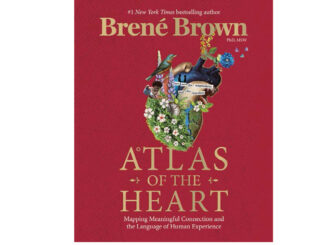
Reviewed by Gail Martino
Vice President, Partnerships
387 Labs
New Haven, Connecticut
gail@gailmartino.com
“Being an Illuminator, seeing other people in all their fullness, doesn’t just happen. It’s a craft, a set of skills, a way of life.”
David Brooks’ How to Know a Person: The Art of Seeing Others Deeply and Being Deeply Seen offers a profound examination of the art and science of understanding others. As a renowned columnist and commentator, Brooks brings his keen perspective to explore the deep connections that form the fabric of our relationships. This book enhances the ability to truly see, hear, and understand those around you, making it an essential read for anyone involved in consumer research, team collaboration, or client interactions/sales. The insights are applicable in both professional and personal contexts.
What Brings Out the Best in You?
One story setting up the book’s key theme stems from a mystery at Bell Labs. Upper management noticed some scientists were significantly more productive than others, generating many more patents. They sought to understand why, examining every possible explanation, including educational background, seniority, and title. No luck!
However, there was one strange quirk they all shared—they all lunched regularly with Harry Nyquist. Nyquist was a unique engineer, the kind of person who loved listening to ideas, challenging thinking, getting inside heads, and bringing out the best in all. Brooks argues that Nyquist made his fellow scientists feel truly seen and heard, fostering idea development in his colleagues. This led to significantly higher productivity among those around him. In short, Nyquist was an Illuminator.
Illuminators and Diminishers
Brooks notes that in every crowd, you can find two types of people: Illuminators and Diminishers. Diminishers make others feel small and unseen, viewing people as objects to be used rather than individuals to be valued. They often stereotype and ignore those around them. Through examples and psychological studies, Brooks explains how everyone, intentionally or unintentionally, diminishes others at times and the impact this has on people.
In contrast, Illuminators possess curiosity about people. They are skilled in understanding others, either through formal training or self-development. They know how to ask the right questions at the right time, and their genuine interest makes others feel valued, understood, and respected. This approach leads to better outcomes.
Illumination: Struggles and Strengths
Brooks uses research, statistics, and case studies to show that at a time when people are more connected than ever through social media and the internet, there is also more loneliness and disengagement. Incivility, or even outright meanness, especially online, has become more pervasive. In effect, there has been a rise in Diminisher skill sets, creating a crisis of connection.
Fortunately, everyone can improve Illuminator skills and strengths. Brooks explains ways to enhance our ability to empathize and be more conscious of how we might diminish others.
Applying the Insights
Here are some reflections I had after reading the book. I share them here to help practitioners consider using them in their practice or personal skill development. However, you will need to read the book yourself to see which of Brooks’s messages, illustrated and made memorable with rich stories and examples, will resonate with you.
- Energy in the Room: What kind of energy are you bringing? Is it fostering openness, or is it competitive or dismissive?
- Listening Skills: Do you “listen loud” by using nonverbal cues to show engagement and allowing pauses for reflection, or do you rush to make your own point?
- Understanding Perspectives: Do you seek to understand perspectives different from your own, thereby fostering empathy—including exploring life stories, family situations, and other factors that might explain the “why” behind opinions?
- Meeting People Where They Are: Do you meet people where they are rather than where you want them to be?
- Vulnerability: Are you willing to be vulnerable and encourage others to do the same?
- Interpreting Experiences: Are you asking people not just what happened but how they interpret their experiences?
- Recognizing Others’ Gifts: Are you acknowledging and amplifying the talents and contributions of others?
Be the Light that Shines
Everyone desires to be seen, heard, understood, and accepted. Brooks posits that true wisdom goes beyond knowledge of subjects like physics or geography to include a deep understanding of people. Illuminators embody this wisdom, setting off a cycle of positive interactions and growth. In a data-driven world marked by superficial interactions and digital distractions, Brooks highlights the timeless value of truly seeing and understanding those around you.




